

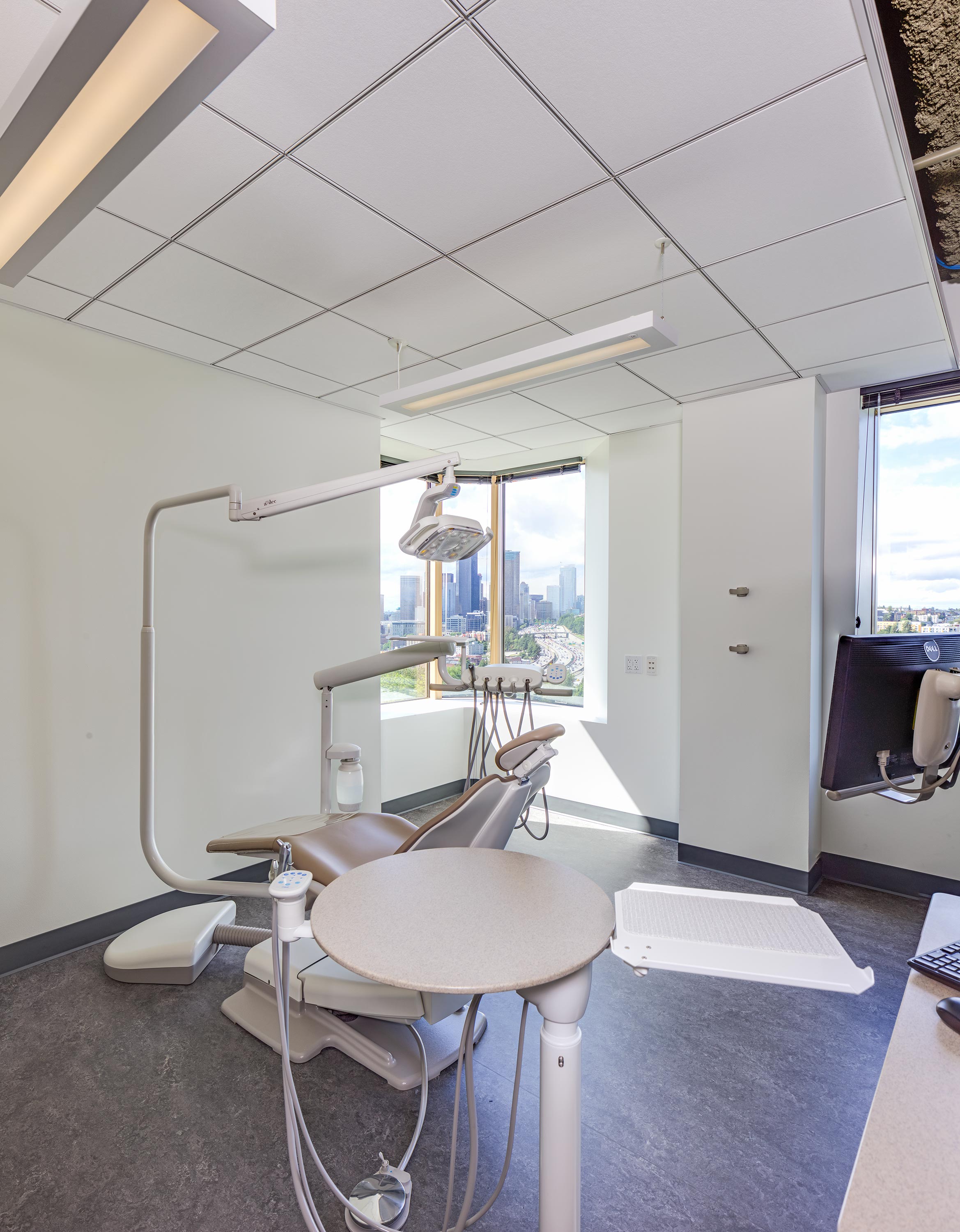
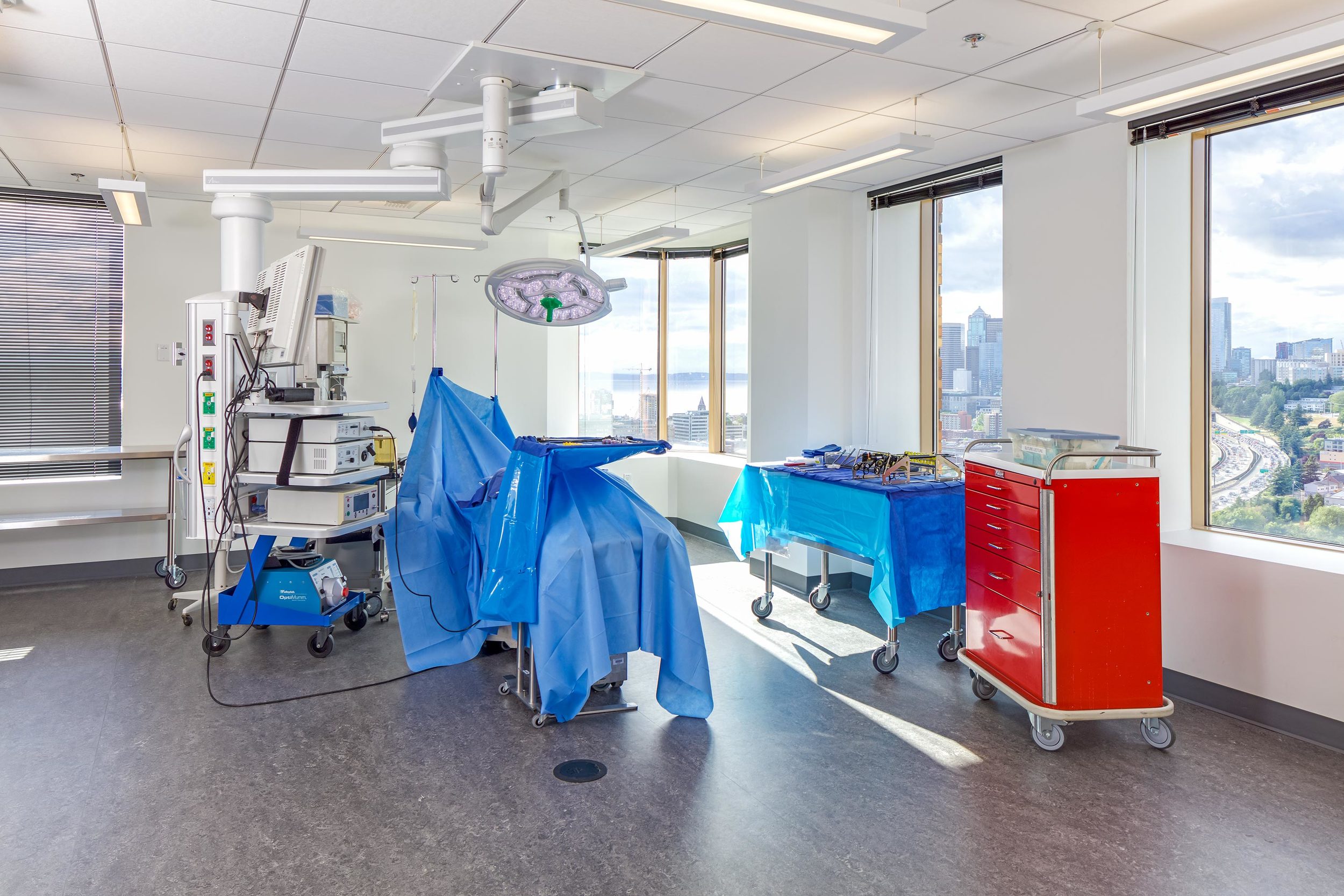
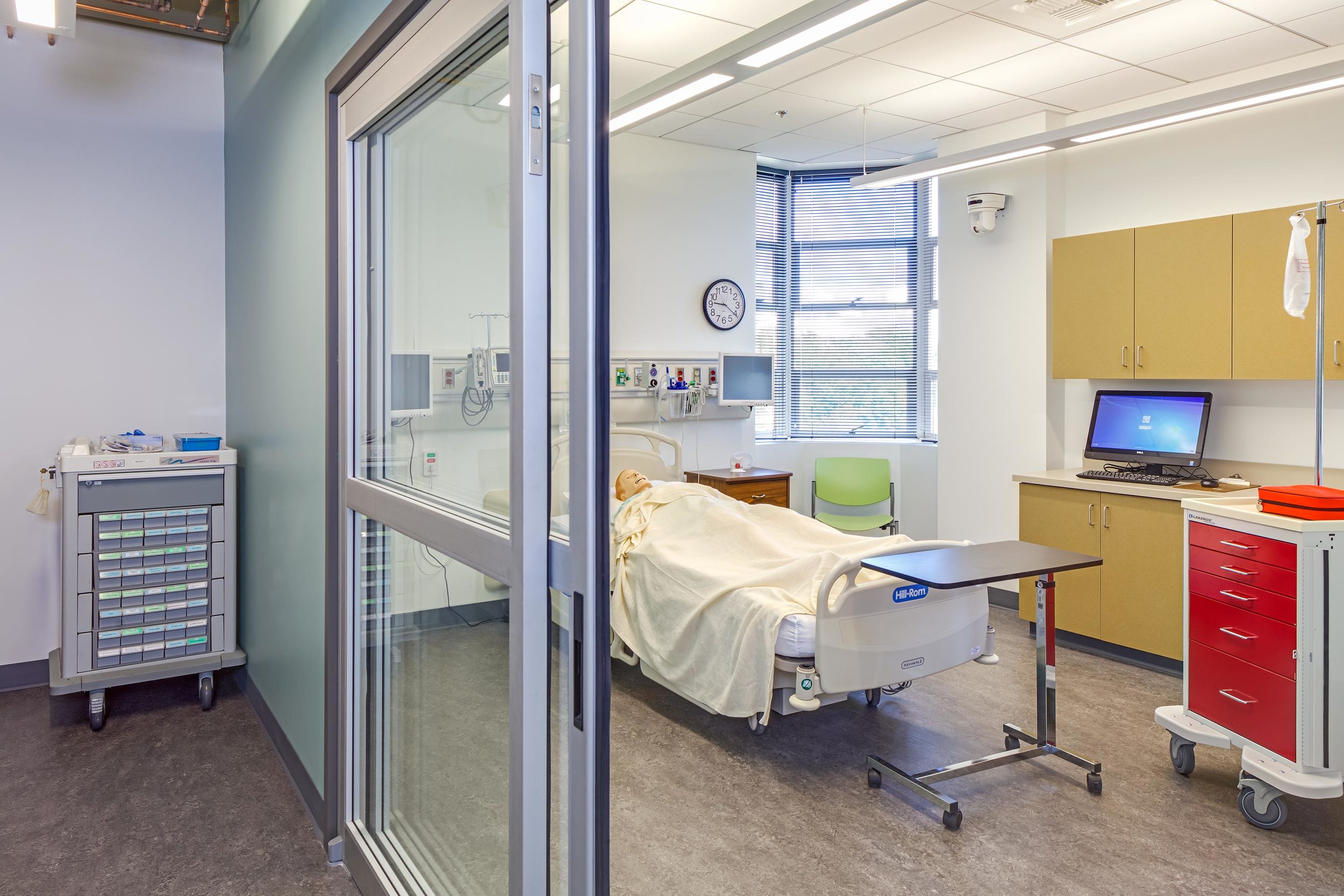
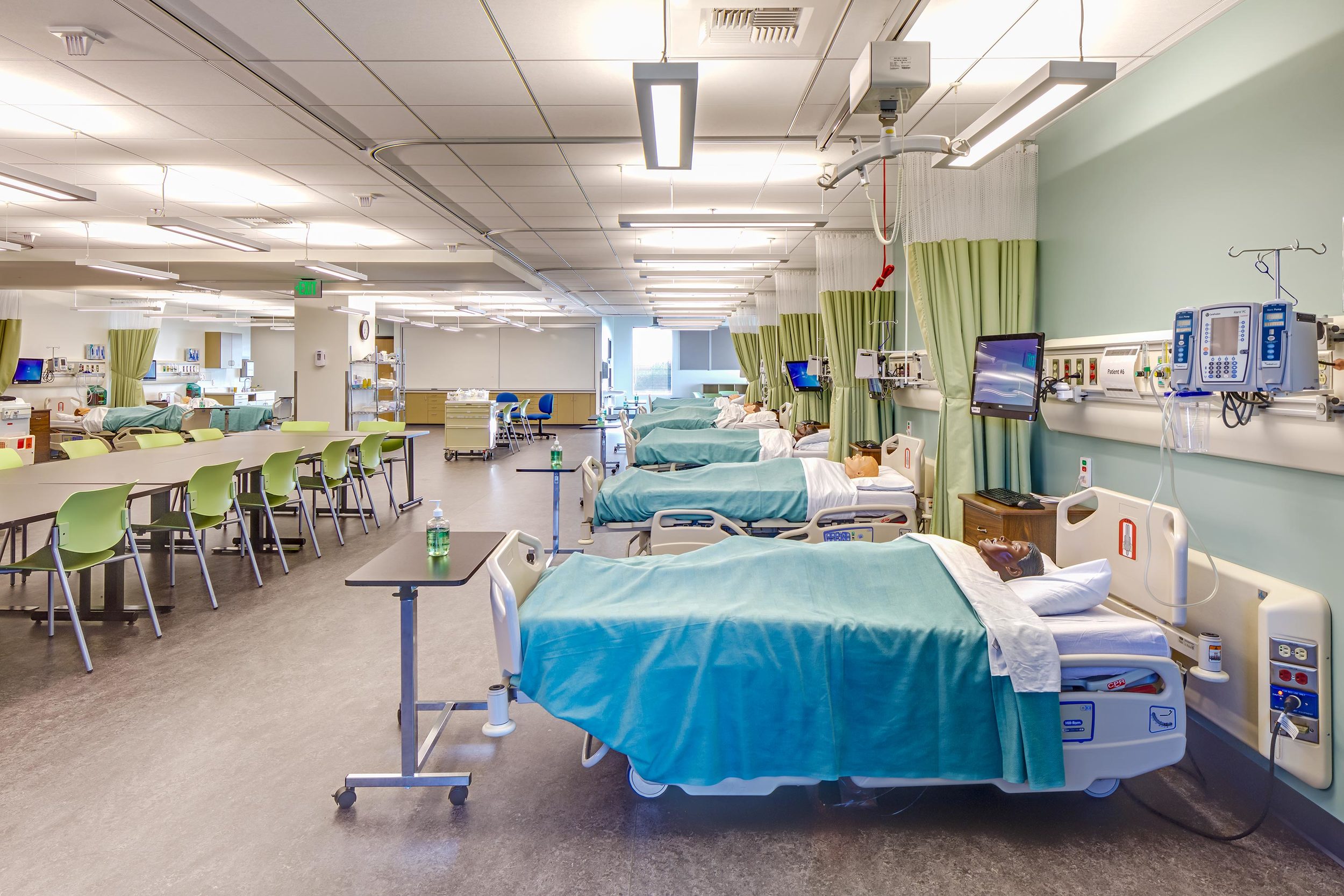
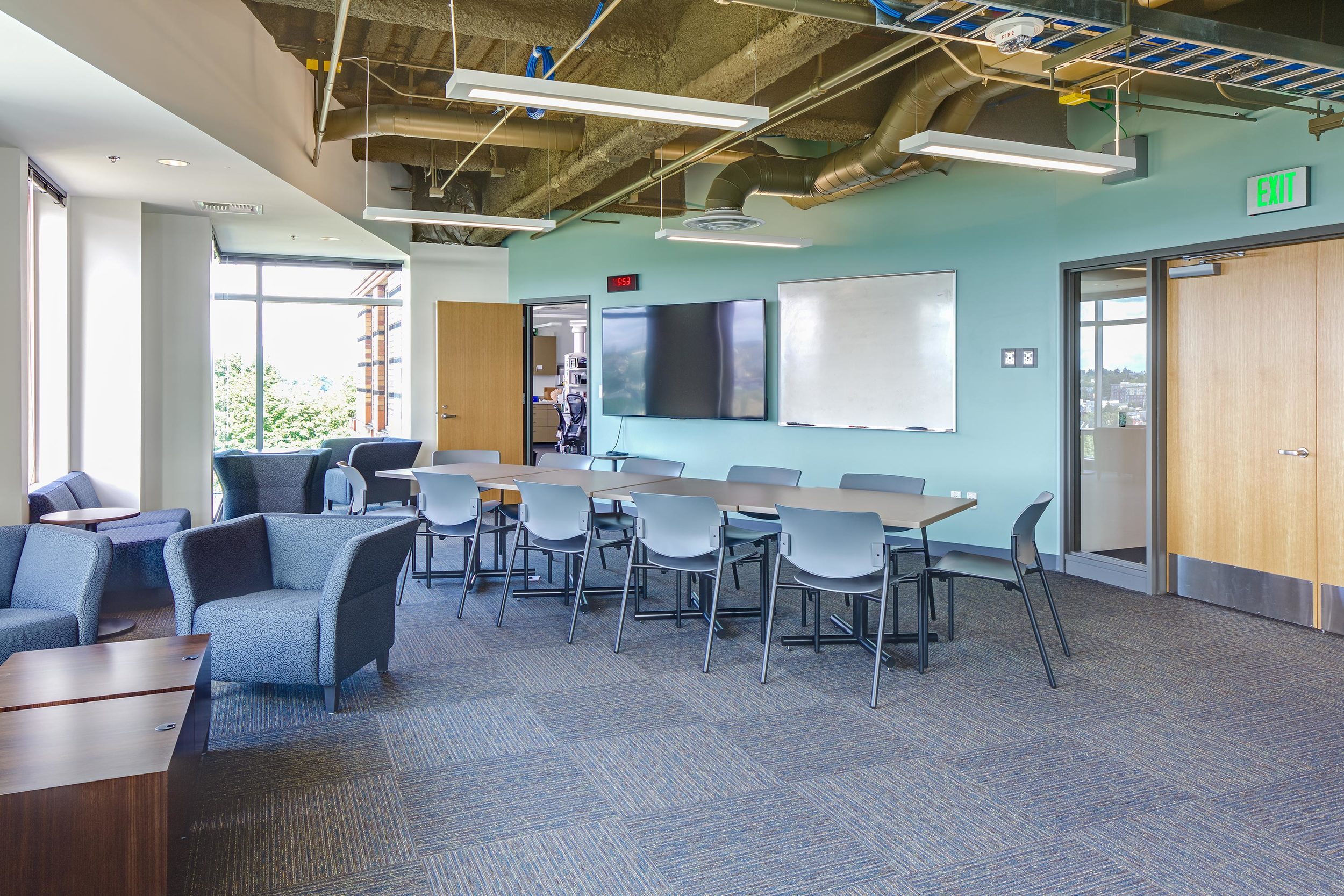
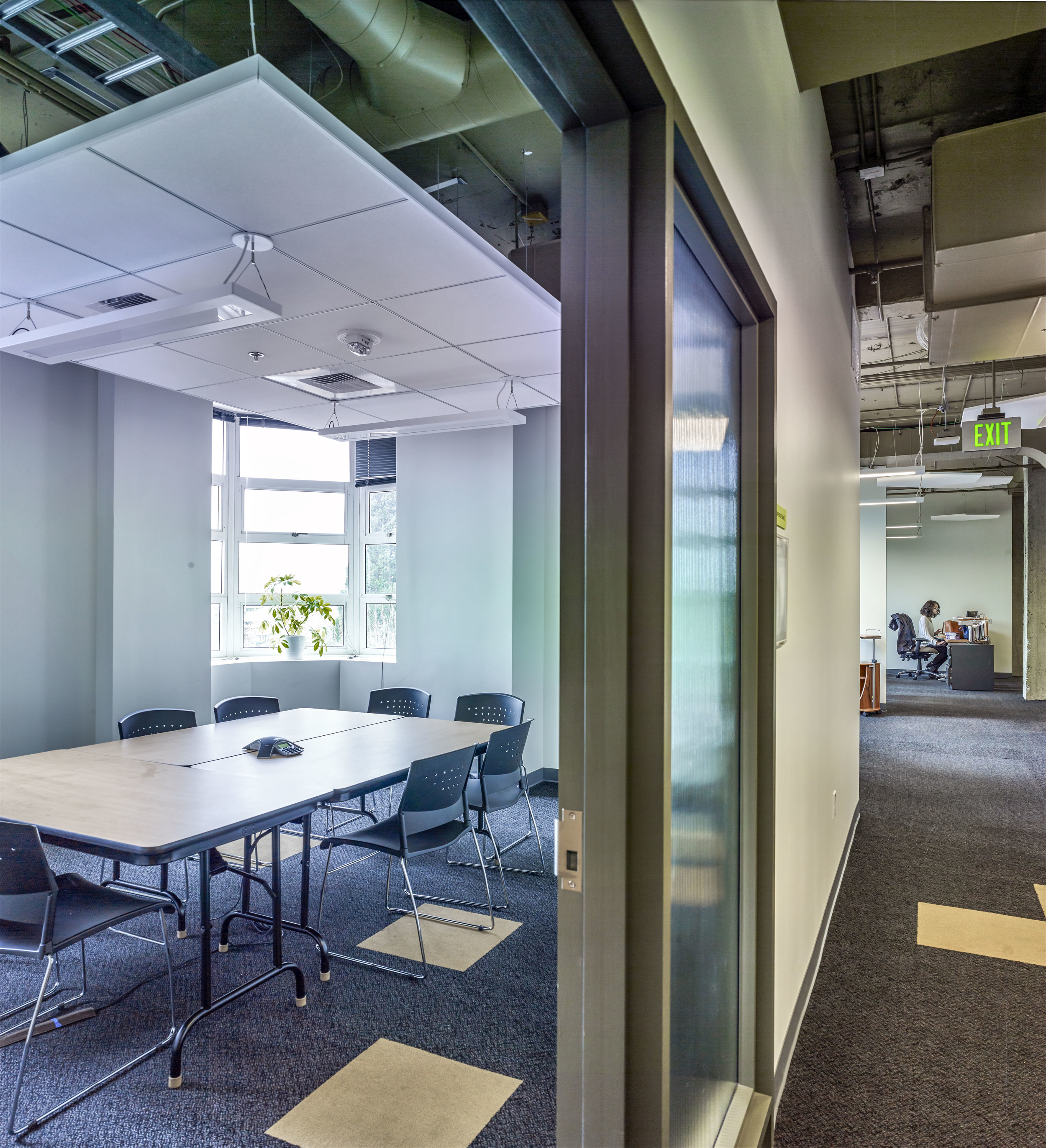
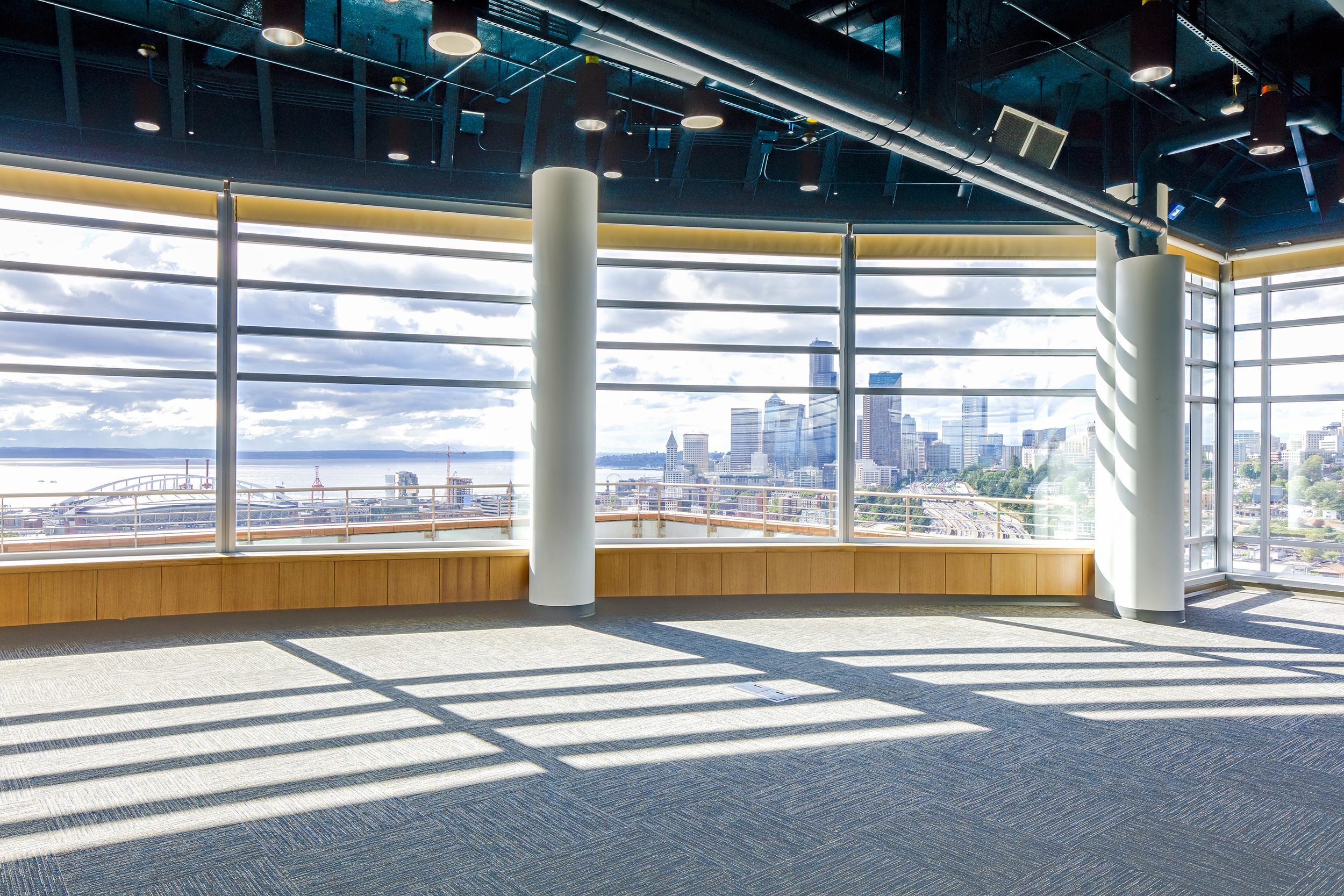
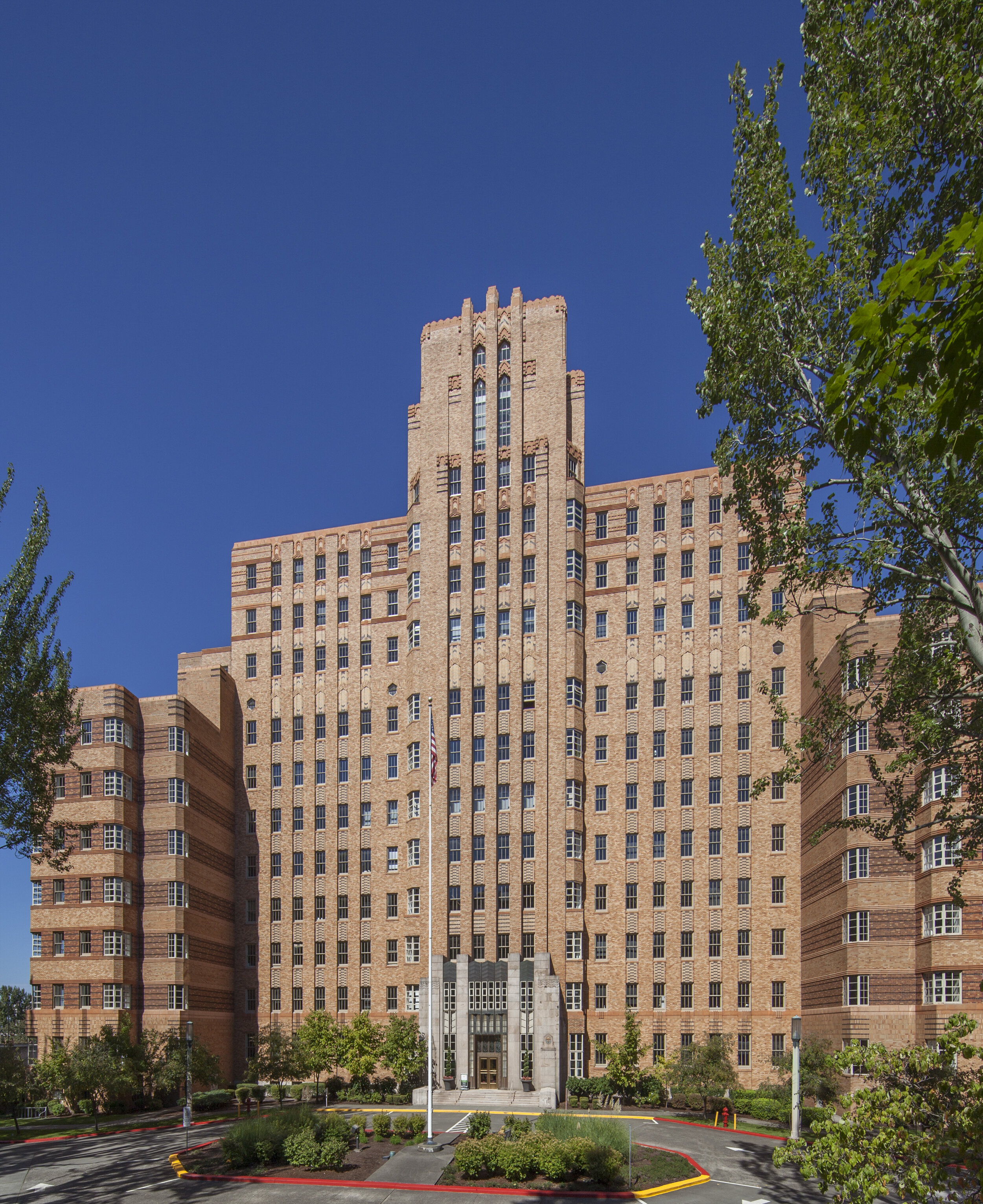
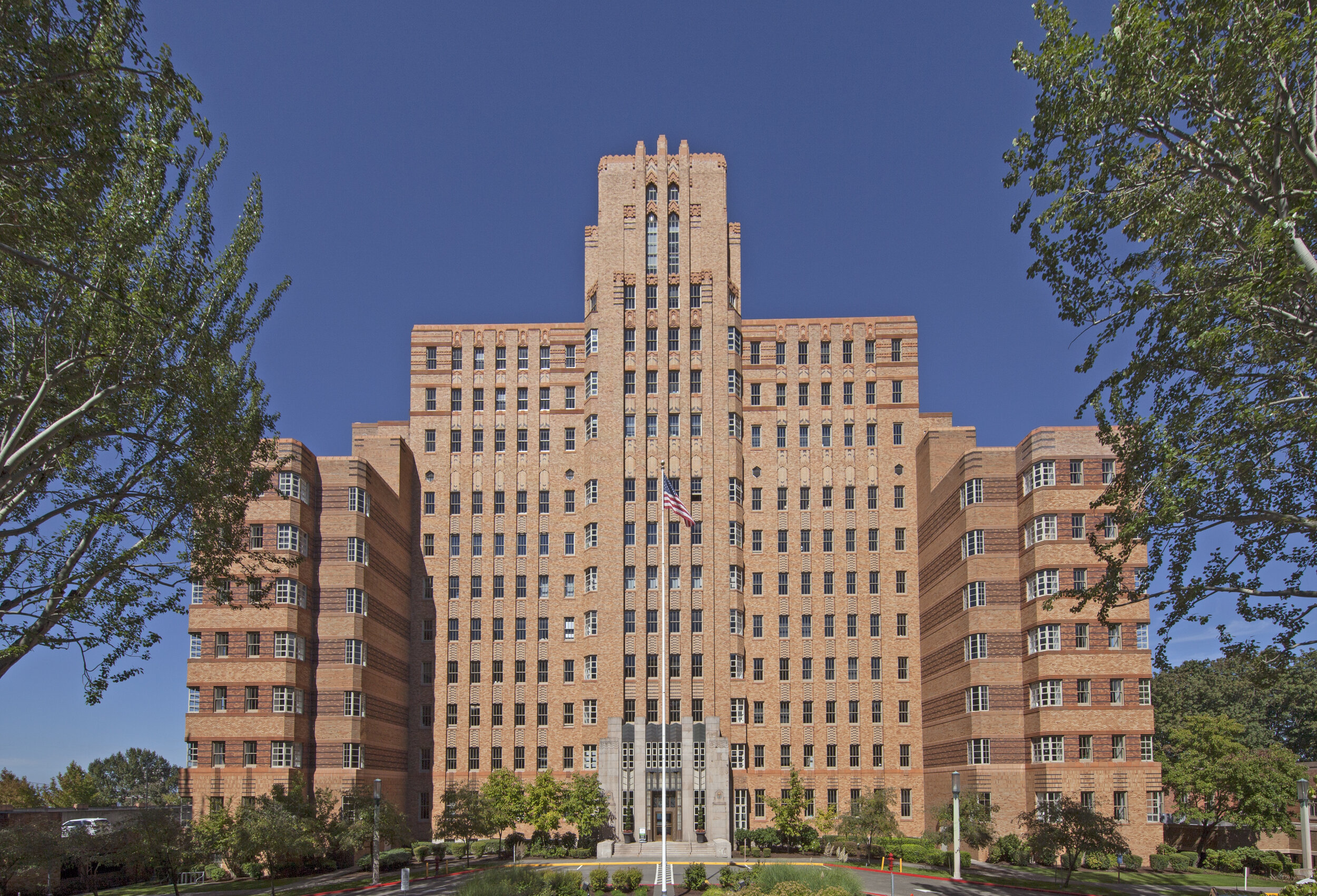
PACIFIC TOWER HEALTH INNOVATIONS CENTER
Washington State Department of Commerce, Seattle Central College | Seattle, Washington
Occupied: Fall 2015, Additional Renovation Ongoing | Construction Cost: $54 million
Schreiber Starling Whitehead Architects performed planning and design services on the landmark Pacific Tower for the Washington State Department of Commerce and Seattle Central College.
This 205,000-sf project is a joint venture between the Department of Commerce and Seattle Central College that will establish a Regional Health Education Campus occupying the first through fourteenth floors of the building. Prominently located on Beacon Hill, south of the downtown area, the Tower will house the College’s Allied Health programs. The scope of work is divided into three primary categories. These include upgrades to the building envelope, core systems, and site accessibility; construction of lab, classroom, and support spaces for the College’s Dental Hygiene/Assisting, Nursing, Respiratory Care, Surgical Tech, and Opticianry programs; and additional interior improvements to create adaptive spaces serving the needs of non-profit organizations focusing in the healthcare and educational fields.
Our involvement on Pacific Tower is part of an ongoing collaborative relationship with the Department of Commerce and College. Early in 2013 the Seattle College District enlisted Schreiber Starling & Lane Architects’ assistance under our State On-Call Agreement to develop an initial list of academic, lab, and support spaces that could serve a 300-FTE RN/BSN Program, and to develop “test-to-fit” conception diagrams organizing the space over several floors of the Pacific Tower.
Subsequent to that study, the Department of Commerce, also through our On-Call, engaged our team to conduct a thorough investigation of the core and shell of the Pacific Tower as part of their due-diligence in preparation of entering a long-term lease. Our team evaluated all building elements, including code compliance, as well as determining the expected service life of the installed equipment. Our recommendations included immediate correction of accessibility and envelope deficiencies, and systems improvements. We also provided recommendations for mid- and far-term improvements and operations costs over the expected 30-year life of the lease.

